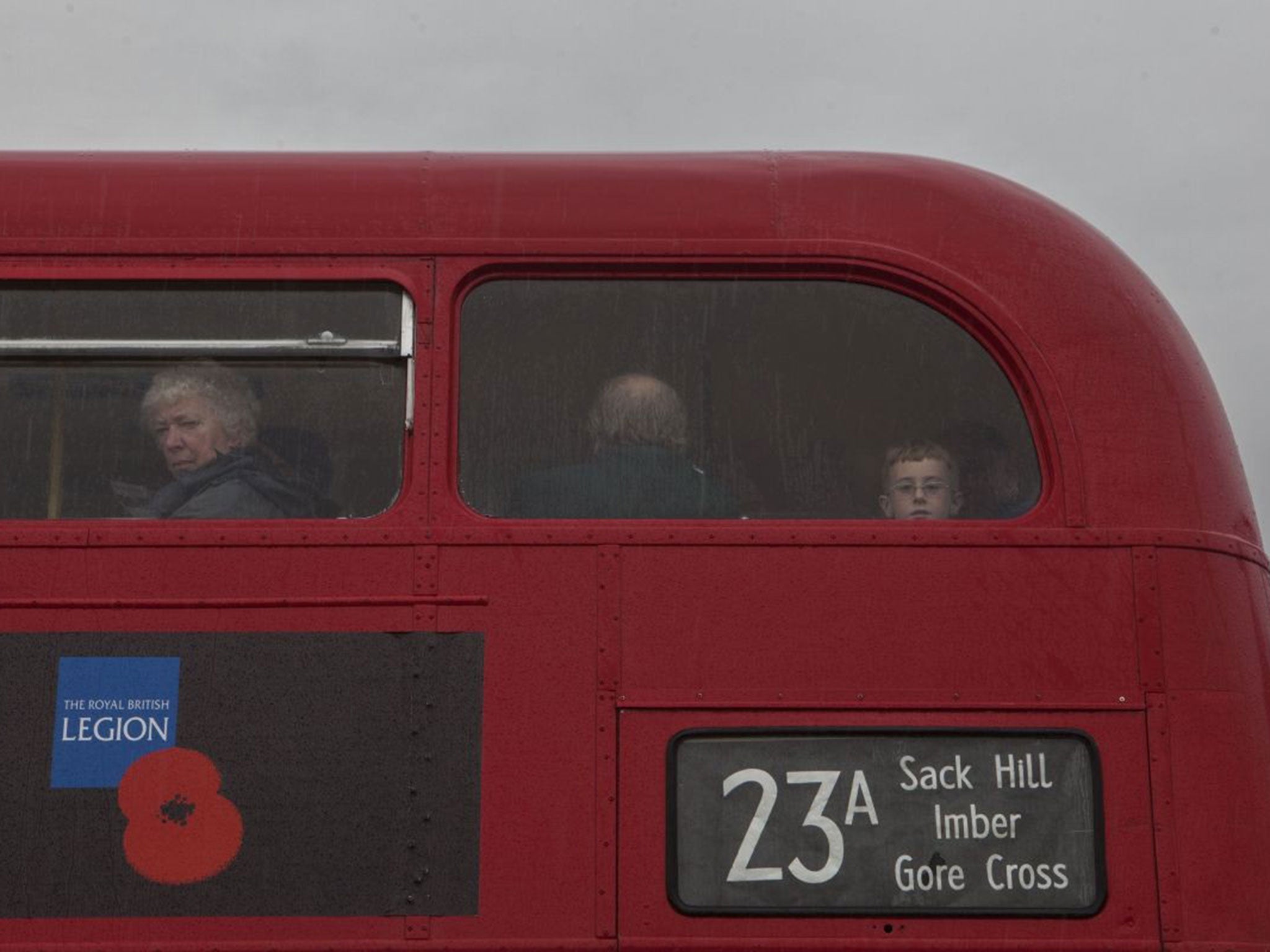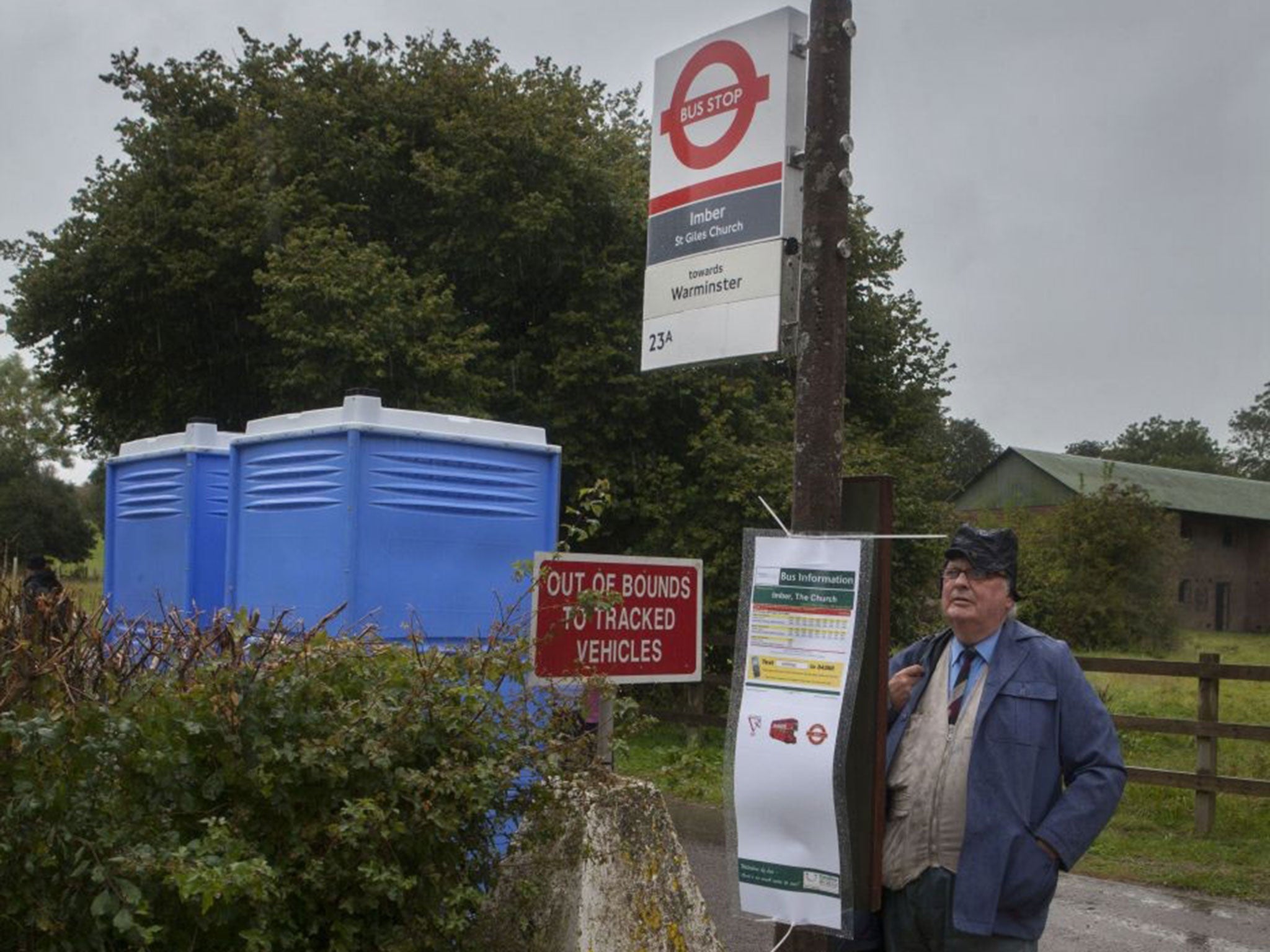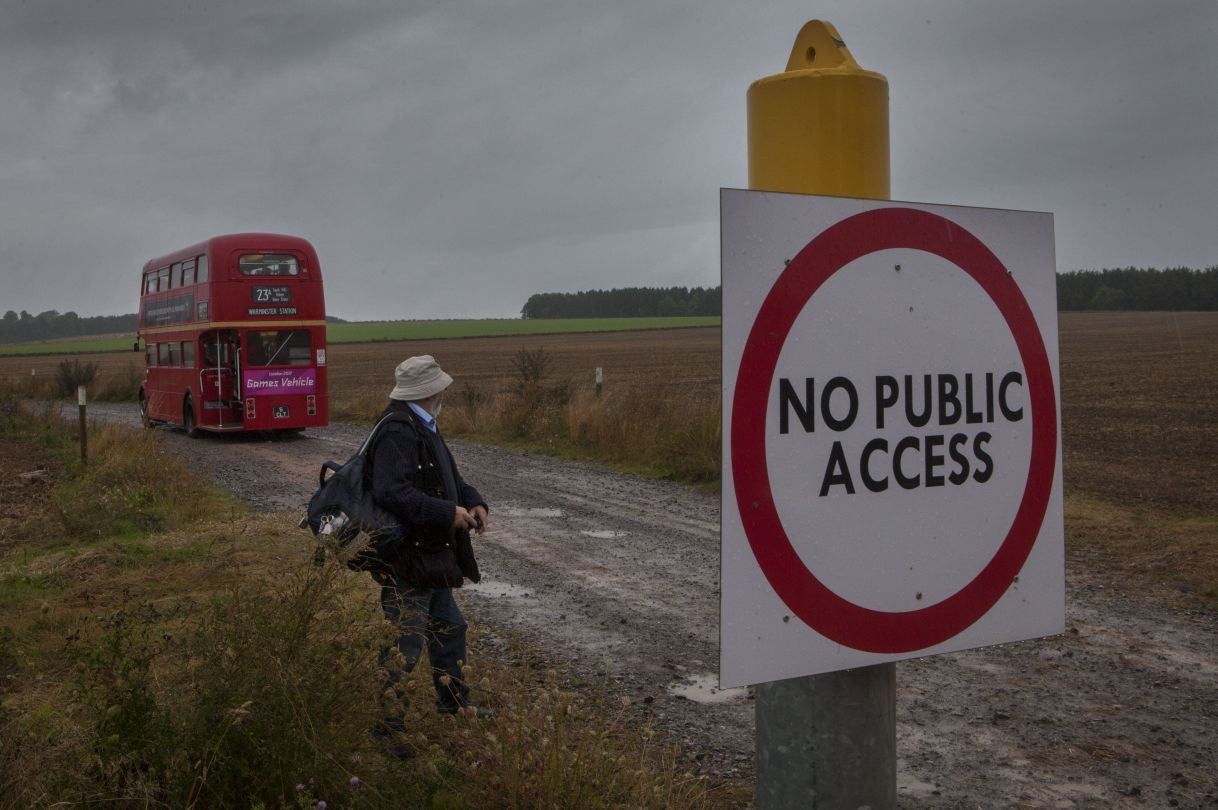On the road to nowhere: A Routemaster trip to remember
For one day only, a full bus service replete with 10 London Routemasters is laid on to an abandoned village in the middle of the Salisbury Plain

Your support helps us to tell the story
From reproductive rights to climate change to Big Tech, The Independent is on the ground when the story is developing. Whether it's investigating the financials of Elon Musk's pro-Trump PAC or producing our latest documentary, 'The A Word', which shines a light on the American women fighting for reproductive rights, we know how important it is to parse out the facts from the messaging.
At such a critical moment in US history, we need reporters on the ground. Your donation allows us to keep sending journalists to speak to both sides of the story.
The Independent is trusted by Americans across the entire political spectrum. And unlike many other quality news outlets, we choose not to lock Americans out of our reporting and analysis with paywalls. We believe quality journalism should be available to everyone, paid for by those who can afford it.
Your support makes all the difference.Sir Peter Hendy is wrestling with the wheel of a London bus as it chugs along remote winding lanes more than 100 miles west of the capital, a flash of red against grey and green. The Commissioner of Transport for London is used to running buses that carry more than six million passengers a day, but today he’s the driver. His destination: a church with no congregation in a village without villagers.
“It’s a proper busman’s holiday,” he shouts in the cab of his own 1962 Routemaster as it splutters slightly on its way up a hill, on a road to pretty much nowhere. On a dismal bank holiday Monday on the Salisbury Plain, his spindly windscreen wipers cannot swish quickly enough.
We are on the 23A, a strange route that operates for one day each year. It starts in Warminster in Wiltshire, and ends in Imber, an isolated ghost village that has been under military occupation for more than 70 years. Other stops on the route include an old farm called Brazen Bottom.
Like many of the maddest ideas, Hendy’s emerged from a pub. “I was having a drink with some mates, all bus industry people, and we were saying to ourselves, ‘where’s the most unlikely place you could run a bus service to?’” he recalls. They settled on nearby Imber, not far from Hendy’s family home in Bath, and, as the pints flowed, they began planning.
Now in its sixth year, the route is registered and licensed by the Bath Bus Company. What began as a plan hatched by boys with bus-shaped toys has become, to Hendy’s delight, a charitable service that provides a link to a lost world.
A large gathering of mostly bus enthusiasts jumps aboard the Routemasters that leave Warminster every half an hour between 0950 and 1820. The average age is high, but there are families, too. “My Mum came last year and I got jealous so I decided to come along this time,” says Kieran Coburn, 11, from Reading.

Before long, Hendy takes a sharp turn on to a one-track lane between unploughed fields. Hills roll into the cloudy distance as the rain keeps falling. Signs warn against entry. A few miles later, past a checkpoint and a rusting tank, a specially made official London bus stop sign tells us we have reached Imber. Beyond a fence, soldiers in camouflage can be seen storming a house without doors or windows.
Imber once had almost 500 residents. But in 1943, the War Office, which owned the surrounding land, evicted them all so that the village could be used to train US troops for D-Day. They were never allowed back. The road to Imber, which remains part of the Army’s vast Salisbury Plain training estate, is now closed for all but a few days each year.
Hidden up a path behind trees and barbed wire fencing, the 13th-century St Giles Church is the only building in the village to have survived intact. It is now marooned with its graveyard on a mound. When the Imber bus service disgorged the first of its curious passengers here in 2009, Hendy assumed that the church had also been abandoned. But then a man called Neil Skelton came running down the path.
“I asked them who was in charge,” Skelton recalls. “I think they thought that they were in trouble but I said, ‘no, this is fantastic. Are you aware that this church is open?’” His passion for St Giles and Hendy’s for public transport were about to coincide to create an unlikely bus-borne pilgrimage.
Skelton, who is from Salisbury, had first come across the church as a wandering teenage cyclist, and was immediately struck by its sorry isolation. The Ministry of Defence was bound only to keep the building watertight but the agreement ended in 2002. Without a congregation, the already damaged church was on the road to ruin.

After a career with the Churches Conservation Trust, Skelton, 66, returned to Imber with a dream of restoring St Giles as its custodian. He helped secure a Grade-I listing, and appealed to the trust for funds. “I had to convince them that restricted access would actually work in its favour,” Skelton recalls. He eventually won the argument and the money. When Hendy rolled up, the bulk of the work had been finished.
“It’s very satisfying because we weren’t sure how many visitors we’d get on a wet bank holiday, but thanks to the buses we’re packed,” Skelton says. He has just refuelled the generator that is keeping lights and tea urns running – the church has no electricity supply. By the end of the day, almost 1,000 people will have deposited their umbrellas in the porch.
Alongside Easter and a popular Christmas carols concert, the Imber Bus service is now a key entry in the church’s very limited calendar. Hendy, whose scheme uses no public funds, also donates half of the £4,000 in fares he takes each year (the British Legion gets the rest). Work has just been completed on a paved path, built for free by a contractor involved in the £1bn project to rebuild Tottenham Court Road station in London after Hendy pulled some strings.
The transport commissioner’s obsession with buses began as a child. He went to school in west London where his classmates included Ed Condry. Condry, by coincidence, is now Bishop of Ramsbury, whose Salisbury diocese includes Imber. After realising his link with Hendy only two years ago, he now attends the annual open day by bus from Warminster, where he lives. “I suppose in a funny kind of way this place represents a modern image of God – elusive and only accessible twice a year,” the bishop says. “If you could drive past every day, probably nobody would bother coming in. But because you can’t there is something magical about it.”
The day is also a showcase for the power of public transport. A big report from the IPPR think-tank warns the following day that millions of people outside of London are failed by declining bus services. Martin Cuff, a retired market trader from Dorset, is riding on Hendy’s bus. “For a lot of older people, buses are our only contact with the outside world,” he says. “But now in my village we can’t even get to the next town by bus. We can get to Poole but only once on Tuesday and Friday.”
Hendy, who is now 61, joined London Transport in 1975 as a graduate trainee. He worked as a driver and conductor before ascending the ranks. By 2005, he was in charge of London Buses, and won praise for his response to the 7/7 bombings. A year later, he took charge of TfL and was knighted last year after the Olympics.
But more than anything, he looks forward all year to his annual journey to Imber. “We have a lot of fun and give people a lot of pleasure,” he says. “I love this place.”
Join our commenting forum
Join thought-provoking conversations, follow other Independent readers and see their replies
Comments